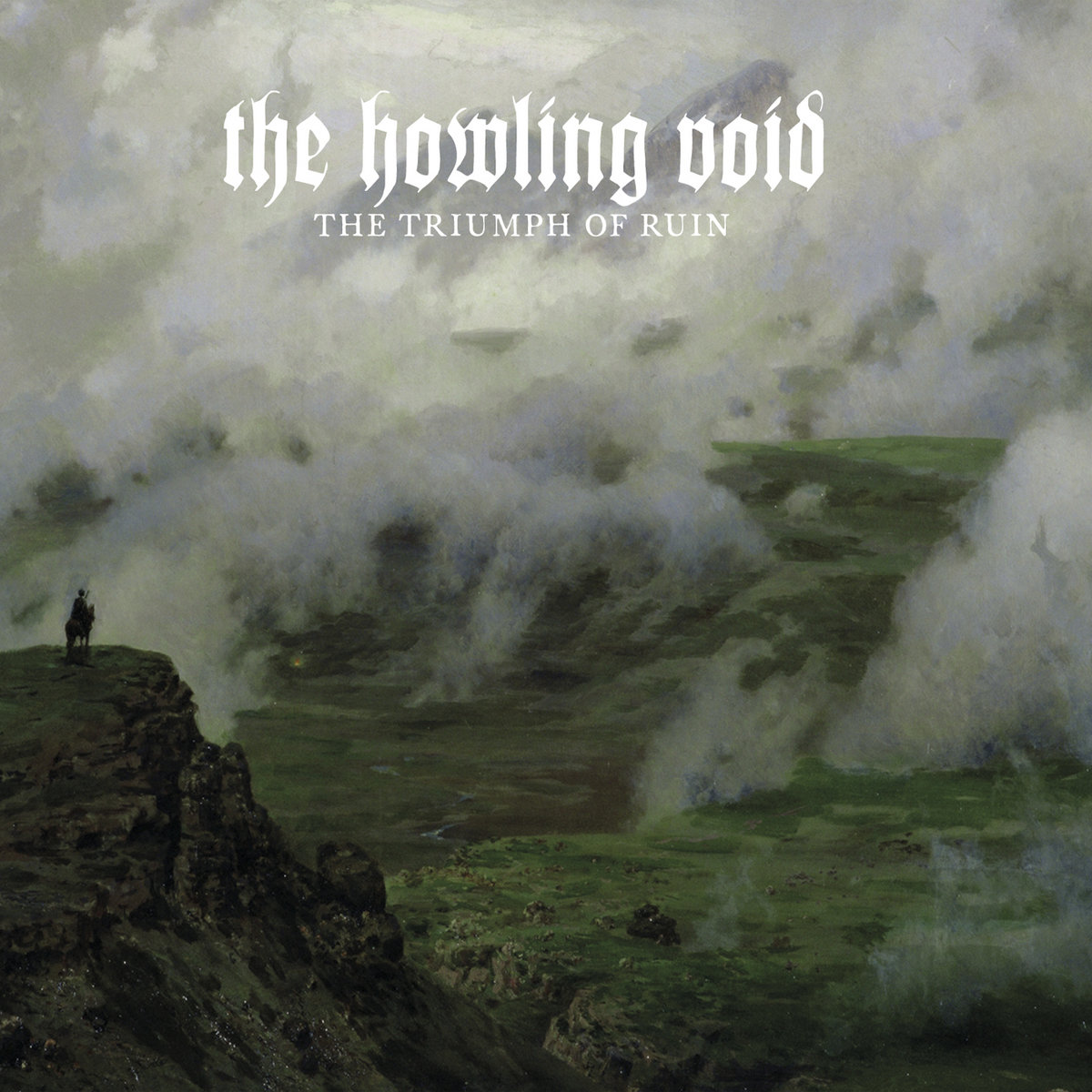Funeral Doom can be challenging to get into. Booming, reverberating guitars, seemingly drawn out to infinity and beyond, cavernous death metal growls, barely anything going on behind the drum kit, and orchestral or sacral instrumentation to top it all off. Sure, genre enthusiasts are able to appreciate all those things, yet to the common Funeral Doom apprentice, some (or all) of the above may seem daunting. Long ago, I was a Funeral Noob myself, but luckily (as with all genres), there are certain gateway ̶d̶̶r̶̶u̶̶g̶̶s̶ albums alleviating the plunge into the dark confines. Exhibit A: The Howling Void – The Triumph of Ruin.
The Origin Story
Hailing from San Antonio, Texas, The Howling Void is a solo project of prolific multi-instrumentalist Ryan Wilson, with The Triumph of Ruin being the project’s fifth full-length release. Despite relying on genre pillars like excruciatingly slow guitars, solemn chanting, and an overpowering sense of omnipresent desolation, its 38 minutes fly by even after repeated spins. This may be largely due to the fact that The Triumph of Ruin is not built firmly upon the aforementioned pillars but instead nonchalantly leans against them.
Melodic Desolation
While it might seem minuscule, the album opens with a gentle and comforting melody before the gargantuan, expected guitar walls start caving in, accompanied by equally sized and atmospheric keys. While it would be easy to get suffocated beneath the towering walls of sound, the fragile melody perseveres: standing its ground throughout the song, at times even breaking through the surface, becoming vivid and dominant. It is supported by soft, seemingly faraway clean vocals – another example of Mr. Wilson deviating from the listener’s expectations! The whole atmosphere is astounding, invoking the feeling of overlooking a mist-ridden, barren landscape with a heavy heart.
Throughout the album, melodies are often predominant and further augmented by the use of strings. The Looming Darkness excels through a particularly beautiful and calm middle section before the heavy guitars make their return, violently hewing down the soothing peacefulness. While this is happening, Mr. Wilson uses one-dimensional, almost apathetic clean vocals to create a mesmerizing and eerie contrast; surely a stylistic choice, as it evokes the feeling of witnessing a horrible thing taking place right before one’s eyes in shock, utterly unable to take action. The song then fades out with gentle keys and a dreamful melody, giving way to the instrumental The Nine Worlds Wept. Doom is nearly absent here; instead, a piano, strings, and toms are used to great effect, keeping the funeral-esque feeling palpable.
These are all the ingredients used on The Triumph of Ruin, applied to varying degrees of success. Despite being a compelling piece, and perhaps ironically, Fenrir lacks teeth, and the intended climax towards the song’s end – where funeral doom guitars and melody melt into each other beautifully – comes up short. It is by no means a bad song, yet pales in comparison, especially to its successor. Where Once A River Flowed is the record’s masterpiece: intensely desolate from the beginning, it loses little time before the guitar walls cave in around the listener, accompanied by mournful synths and a dark melody. Deep clean vocals are supplemented and juxtaposed with solemn, heavenly chanting – resulting in a transfixing and ineffably bleak contrast.
The Calm After the Storm
Afterward, the album fades out with heavy reliance on strings, a soothing yet bittersweet guitar, and somber cleans. Drums are used only sparingly in this final chapter, with the mournful choir also taking a backseat. It’s essentially an appendix: the calm after the storm, the cathartic gasp of relief after realizing that even though all the fields are burnt and barren, even though ruin has triumphed, not all is lost.
Despite being more on the atmospheric than the bone-crushing side of the genre, this exhibit is indeed still Funeral Doom. Lacking the soul-obliterating heaviness one would surely expect (either eagerly or fearfully), its gloom is debilitating, oppressive, and virtually ever-present, with only a very few moments of respite to wipe away the tears and get a new handkerchief. An excellent entryway for genre novices and an essential gem for connoisseurs.

